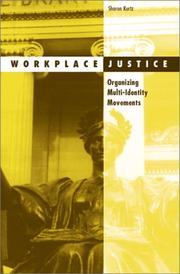-

暴力与民主
在这本富有挑战性的书中,当代著名政治哲学家约翰•基恩呼吁重新认识民主与暴力之间的复杂关系。基恩探讨了处于争议中的暴力概念,提出并回答了如下一些主要问题:为何说暴力是民主最大的敌人?为什么今天全球性的“暴力三角”正在诱使政治家动用不民主的紧急权力?暴力能否“民主化”以及如何“民主化”?自始至终,基恩优先考虑伦理问题,提出并阐述了清除过剩暴力的十条规则。 -

Methods of Social Movement Research
Citing the critical importance of empirical work to social movement research, the editors of this volume have put together the first systematic overview of the major methods used by social movement theorists. Original chapters cover the range of techniques: surveys, formal models, discourse analysis, in-depth interviews, participant observation, case studies, network analysis, historical methods, protest event analysis, macro-organizational analysis, and comparative politics. Each chapter includes a methodological discussion, examples of studies employing the method, an examination of its strengths and weaknesses, and practical guidelines for its application. -

Social Movements, 1768-2004
Westerners invented social movements during the 18th century, but after that social movements became vehicles of popular politics across the world. By locating social movements in history, prize-winning social scientist Charles Tilly provides rich and often surprising insights into the origins of contemporary social movement practices, relations of social movements to democratization, and likely futures for social movements. -

Poor People's Movements
Have the poor fared best by participating in conventional electoral politics or by engaging in mass defiance and disruption? The authors of the classic Regulating The Poor assess the successes and failures of these two strategies as they examine, in this provocative study, four protest movements of lower-class groups in 20th century America: -- The mobilization of the unemployed during the Great Depression that gave rise to the Workers' Alliance of America -- The industrial strikes that resulted in the formation of the CIO -- The Southern Civil Rights Movement -- The movement of welfare recipients led by the National Welfare Rights Organization. -

Why Civil Resistance Works
For more than a century, from 1900 to 2006, campaigns of nonviolent resistance were more than twice as effective as their violent counterparts in achieving their stated goals. By attracting impressive support from citizens, whose activism takes the form of protests, boycotts, civil disobedience, and other forms of nonviolent noncooperation, these efforts help separate regimes from their main sources of power and produce remarkable results, even in Iran, Burma, the Philippines, and the Palestinian Territories. Combining statistical analysis with case studies of specific countries and territories, Erica Chenoweth and Maria J. Stephan detail the factors enabling such campaigns to succeed and, sometimes, causing them to fail. They find that nonviolent resistance presents fewer obstacles to moral and physical involvement and commitment, and that higher levels of participation contribute to enhanced resilience, greater opportunities for tactical innovation and civic disruption (and therefore less incentive for a regime to maintain its status quo), and shifts in loyalty among opponents' erstwhile supporters, including members of the military establishment. Chenoweth and Stephan conclude that successful nonviolent resistance ushers in more durable and internally peaceful democracies, which are less likely to regress into civil war. Presenting a rich, evidentiary argument, they originally and systematically compare violent and nonviolent outcomes in different historical periods and geographical contexts, debunking the myth that violence occurs because of structural and environmental factors and that it is necessary to achieve certain political goals. Instead, the authors discover, violent insurgency is rarely justifiable on strategic grounds. -

Networks of Outrage and Hope
This book is an exploration of the new forms of social movements and protests that are erupting in the world today, from the Arab uprisings to the indignadas movement in Spain, and the Occupy Wall Street movement in the US. While these and similar social movements differ in many important ways, there is one thing they share in common: they are all interwoven inextricably with the creation of autonomous communication networks supported by the Internet and wireless communication. In this timely and important book, Manuel Castells -- the leading scholar of our contemporary networked society -- examines the social, cultural and political roots of these new social movements, studies their innovative forms of self-organization, assesses the precise role of technology in the dynamics of the movements, suggests the reasons for the support they have found in large segments of society, and probes their capacity to induce political change by influencing people's minds. Based on original fieldwork by the author and his collaborators as well as secondary sources, this book provides a path-breaking analysis of the new forms of social movements, and offers an analytical template for advancing the debates triggered by them concerning the new forms of social change and political democracy in the global network society.